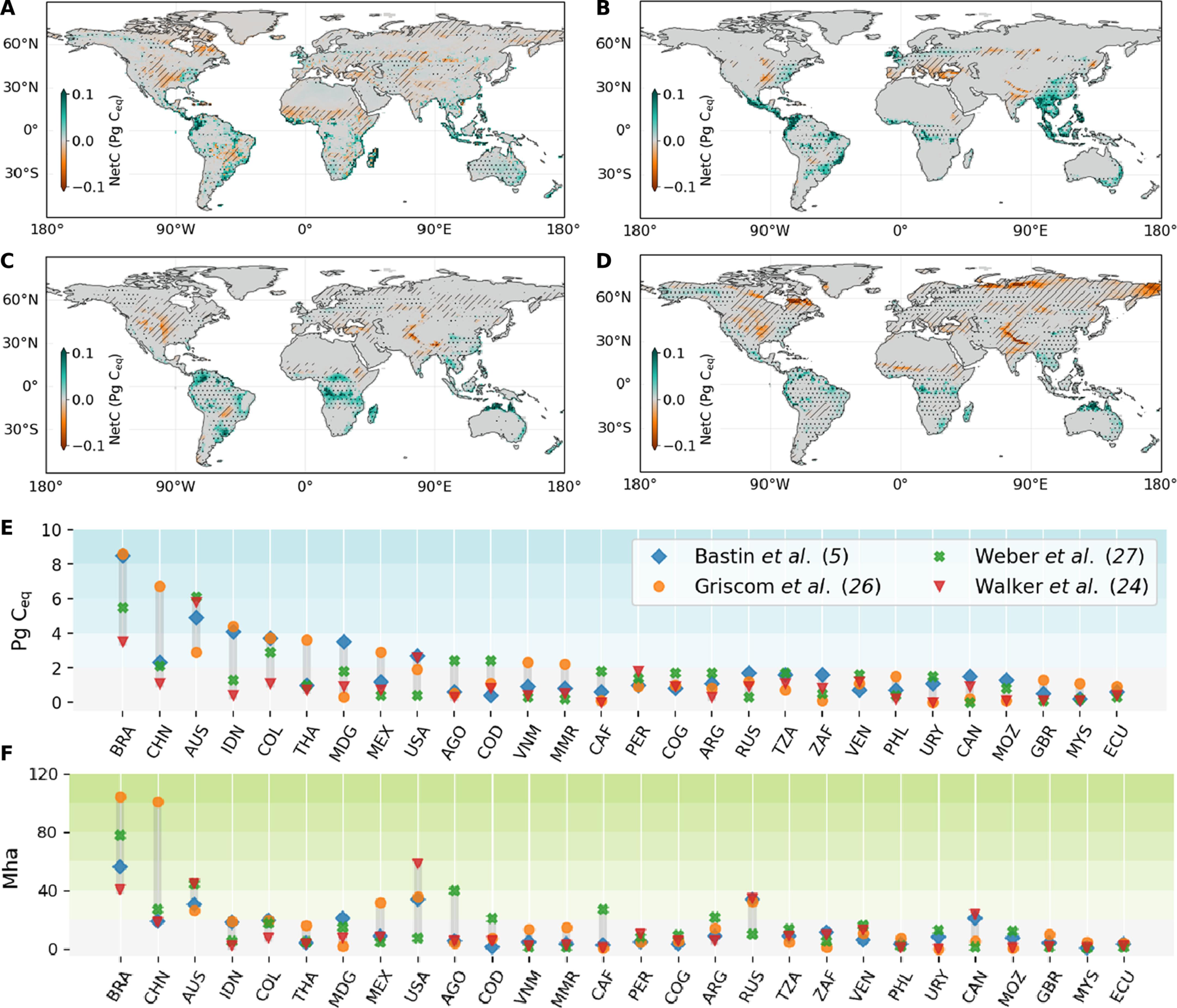考虑气候变化、火灾和反照率因素后的定向造林气候减缓潜力
IF 12.5
1区 综合性期刊
Q1 MULTIDISCIPLINARY SCIENCES
引用次数: 0
摘要
植树造林和再造林都是指造林战略,它们被广泛推广为缓解人为变暖的关键工具。然而,在基于卫星的评估中,这些努力的固碳潜力仍然不确定,特别是在考虑动态气候条件、植被-气候反馈、火主导干扰以及与地表反照率变化相关的权衡时。利用耦合的地球系统模型,我们估计在可持续的共享社会经济路径下,全球造林在2021-2100年期间减轻了31.3至69.2 Pg C当量(碳当量)。从区域来看,造林的最大碳缓解潜力集中在热带地区,而中高纬度地区则表现出更大的异质性,这突出表明需要制定针对区域的战略,并进一步完善基于自然的缓解计划。我们的研究结果强调了在评估造林计划的碳减排潜力时考虑干扰和最小化不利反照率变化的重要性。我们还提倡开发一致的、高分辨率的地图,标出适合有针对性地造林的地区,避免使用环境敏感的土地,避免与其他人类活动发生冲突。本文章由计算机程序翻译,如有差异,请以英文原文为准。

Climate mitigation potential for targeted forestation after considering climate change, fires, and albedo
Afforestation and reforestation, both of which refer to forestation strategies, are widely promoted as key tools to mitigate anthropogenic warming. However, the carbon sequestration potential of these efforts remains uncertain in satellite-based assessments, particularly when accounting for dynamic climate conditions, vegetation-climate feedback, fire-dominated disturbance, and the trade-offs associated with surface albedo changes. Leveraging a coupled Earth system model, we estimated that global forestation mitigates 31.3 to 69.2 Pg Ceq (carbon equivalent) during 2021–2100 under a sustainable shared socioeconomic pathway. Regionally, the highest carbon mitigation potential of forestation concentrates in tropical areas, while mid-high-latitude regions demonstrate higher heterogeneity, highlighting the need for region-specific strategies and further refinement of nature-based mitigation plans. Our findings underscore the importance of considering disturbances and minimizing adverse albedo changes when estimating the carbon mitigation potential of forestation initiatives. We also advocate for the development of consistent, high-resolution maps of suitable areas for targeted forestation, avoiding environmentally sensitive lands and potential conflicts with other human activities.
求助全文
通过发布文献求助,成功后即可免费获取论文全文。
去求助
来源期刊

Science Advances
综合性期刊-综合性期刊
CiteScore
21.40
自引率
1.50%
发文量
1937
审稿时长
29 weeks
期刊介绍:
Science Advances, an open-access journal by AAAS, publishes impactful research in diverse scientific areas. It aims for fair, fast, and expert peer review, providing freely accessible research to readers. Led by distinguished scientists, the journal supports AAAS's mission by extending Science magazine's capacity to identify and promote significant advances. Evolving digital publishing technologies play a crucial role in advancing AAAS's global mission for science communication and benefitting humankind.
 求助内容:
求助内容: 应助结果提醒方式:
应助结果提醒方式:


